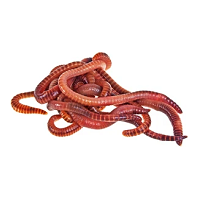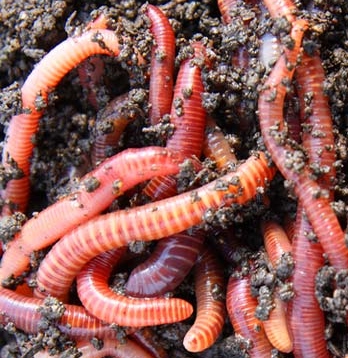How Where To Find Red Wigglers can Save You Time, Stress, and Money.
Table of ContentsThe smart Trick of Where To Find Red Wigglers That Nobody is Talking AboutSome Known Details About Where To Find Red Wigglers Where To Find Red Wigglers Things To Know Before You BuyMore About Where To Find Red WigglersThe Of Where To Find Red WigglersAn Unbiased View of Where To Find Red WigglersThe Facts About Where To Find Red Wigglers Uncovered
If you have a difficult time situating them, try utilizing a shovel to dig right into the ground and break the damp dirt with your hands to find them. You can likewise try to find them in the early morning when sprinklers wet the soil. Conversely, you can simulate the wetness and rain variables by yourself! Soak your yard or grass with water and try to find your worms once it gets dark.Lift it utilizing utilize and search for your worms inside the opening. Don't forget to look under rocks, blocks, timber, and various other items you might find on the ground, as that's where worms typically reside.
Once you capture several worms, you will wish to dip your fingers right into sawdust to dry them and boost your next hold. Keep in mind that you should not get rid of a lot of worms from one place as this can negatively impact that environment. Put your worms into their container and shop them in the fridge.
You can also use a pitchfork to tempt worms above the ground. Known as a worm grunting stick, this standard approach entails sticking the pitchfork into the ground and then rubbing it with an item of steel or timber. The resonances that are produced simulate the audio of a mole, which creates the worms to surface.
Where To Find Red Wigglers Can Be Fun For Anyone
For long-lasting worm storage, we recommend developing a dedicated worm farm. Ideally, you found numerous means to catch your worms the next time you require them after closing hours or when you're feeling too lazy to obtain in the car and drive a number of miles to the nearby worm supplier!
We'll talk about how to maintain red wigglers and why they ought to be the go-to worm for most composters. Fun truth: The "fetid" part of the binomial name refers to what some claim is a smelly secretion the red wiggler makes use of to fend off killers. The composition of a red wiggler appears like that of various other common earthworms; a long-segmented body starts at the pointed head and terminates at a slightly-flatted tail.
The digestive system is basic, beginning at the mouth where the worm starts to consume its food before passing it on the pharynx. The throat is a muscular section which acts like a pump to draw food right into the mouth before pumping it out into the esophagus. The esophagus is narrow and thin-walled and serves as the "waiting room" for the gizzard.
Some Known Incorrect Statements About Where To Find Red Wigglers
Keep in mind: This need for grinding is why grit is recommended in a worm container. The worm features no native grinding capability so the worm counts on ingested grit to help grind its food in the gizzard. The stomach is where the first chemical break down of food occurs with the help of a protein-busting enzyme.
The intestinal tract develops the longest part of the worm and is where the majority of food digestion takes area via enymatic processes. The castings at some point pass with the anus at the end of the worm as pills coated with a biologically-rich mucous.
Within 42 days, these baby worms will certainly reach sexual maturity as confirmed by the emergence of the clitellum. A mature red wiggler can be expected to live in between one to three years (Where To Find Red Wigglers). The mighty red wiggler might occasionally be utilized as a bait worm for smaller sized fish or as a protein resource for hens and reptiles
And as pointed out over, they are the most common composting worm in the world. Why? Well there's probably not simply one reason. Rather, a combination of expense, strength, and convenience in a variety of temperature levels makes it the most appropriate composting worm for many brand-new vermicomposters. Red wigglers and their cocoons can survive in a variety of conditions.
Where To Find Red Wigglers Can Be Fun For Everyone
This is a typical practice amongst worm carriers that do not want to risk having the worms being in a hot or chilly storage facility over the weekend break. Worm cultivators are not saving worms in a circumstance where they are ready to deliver. The worms need to be gathered from their habitat first, so cultivators will certainly frequently establish a Friday or Saturday due date in order to harvest in time for a Monday delivery.
To conserve on shipping price, you might want to see if there are any type of close-by "Mom and Pop" shops with a Google search.

The Best Guide To Where To Find Red Wigglers
For ideal outcomes, you desire to fire for about 60-70% dampness degree. At the ideal moisture degrees which is simply under 70% that handful need to hardly generate one decline of liquid.
The European Nightcrawler, the larger cousin of the red wiggler, is equally as ravenous and read likewise produces a great lure worm. It chooses a little bit of a cooler atmosphere than the red wiggler. The African Nightcrawler is an extremely huge composting worm and makes a gorgeous, granular actors.
The Indian Blue is voracious, but also favors a warmer environment and it additionally shows a tendency to run away the bin. The red wiggler is a hardy worm and isn't as choosy concerning its climate. I like to call it the Ford Taurus of vermicomposting worms; you won't boast to your hardcore composting pals that you have them, yet they will serve you well.
The 45-Second Trick For Where To Find Red Wigglers
As Faucet demonstrated, a fishermen can do a good offer to make a worm more enticing.

Early morning is prime feeding time, and the weightless bait's sluggish descent leaves 5 inches of wriggling protein completely view for rather a while. After you have actually made the cast, keep the bond open and placed the rod in a forked stick. The line will diminish the rod in slow-moving loops as the worm resolves, yet generally the slow-moving loopholes will certainly come to be a blur, and the early morning will suddenly get rather intriguing.
I normally use an entire 'spider, like marabou dressing, and go down the pole for two or three seconds when I get a hit.
Where To Find Red Wigglers Things To Know Before You Get This
And distinguishing base from a bite can be difficult. The technique is to ease the pole back to the strike (possibly a foot) site here and feel for life at the end of the tightening up line. If it's there, set the hook with a move instead of a jerk. Every so often you'll find yourself hooked to those sluggish, passionate tugs, and feel the weight visite site of a good walleye.